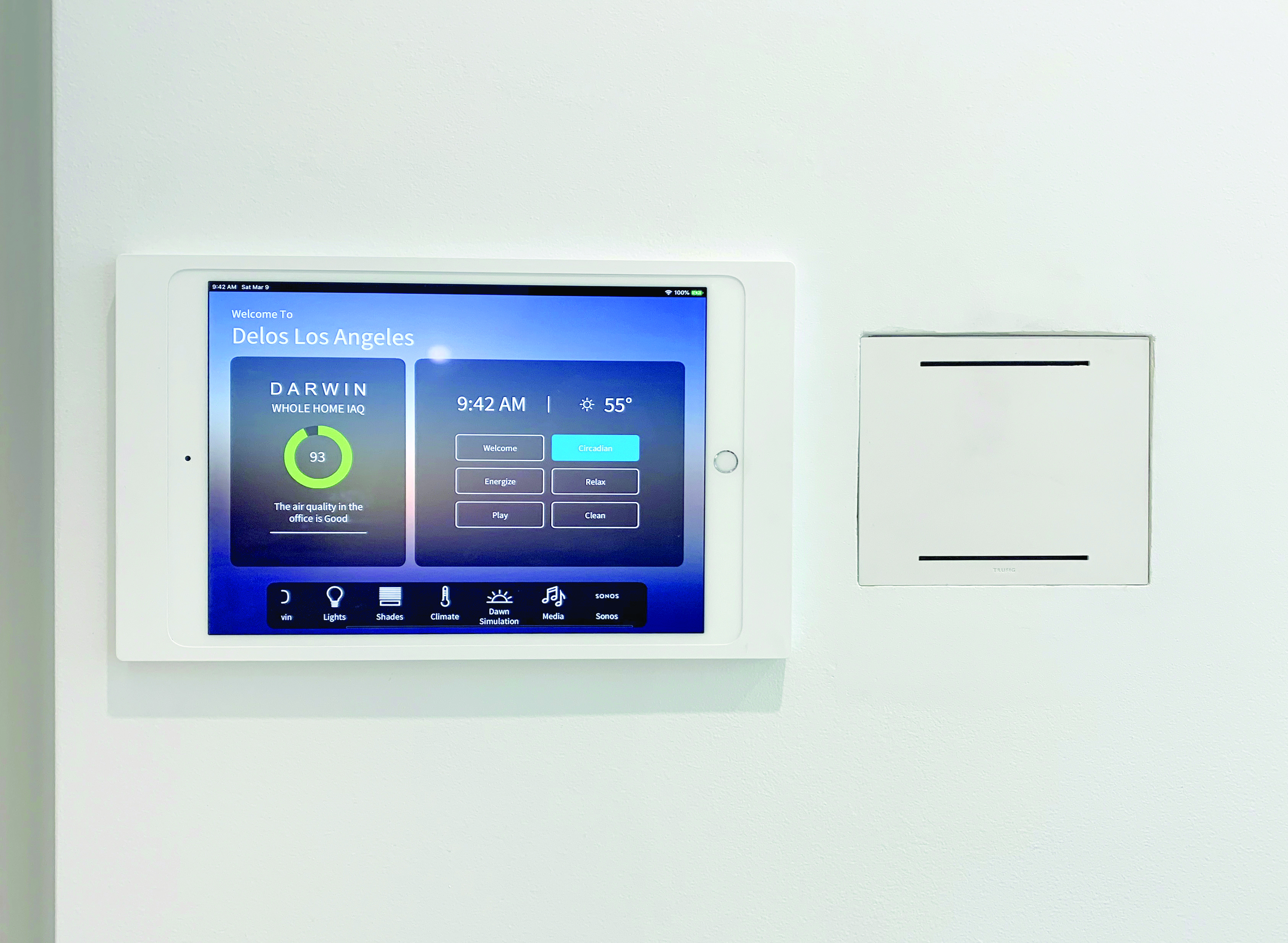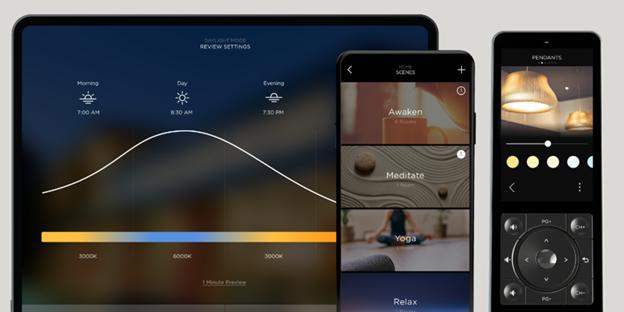What does home wellness actually mean to homeowners beyond the buzz? We explore lighting, music, acoustics, and air and water purification in the home to contribute to a healthy home and potentially curb disease over the course of a lifetime.
We are spending more time at home than ever. With all this extra ‘staying in’, a home’s flaws can become glaringly evident. You notice the crack in the window; the leaky faucet becomes intolerable; and the fading paint begins to really irk you. These cosmetic issues are easily noticed and fixed. But what about all the issues we cannot see or hear? The biggest dangers in the home are actually invisible and can negatively affect your health over time.
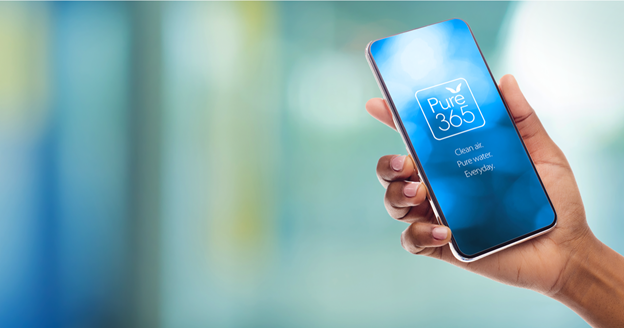 Home technology is the answer, because now you can monitor and respond to all those invisibles to create a safer, healthier, and more nurturing home with long-term benefits for you and your family.
Home technology is the answer, because now you can monitor and respond to all those invisibles to create a safer, healthier, and more nurturing home with long-term benefits for you and your family.
What You Can’t See Matters
According to the United States Environmental Protection Agency, Americans, on average, spend approximately 90 percent of their time indoors, where the concentrations of some pollutants are often two to five times higher than typical outdoor concentrations! Additionally, a third of deaths from stroke, lung cancer, and heart disease are due to air pollution, the world’s largest environmental health threat accounting for over 8 million premature deaths, according to the World Health Organization. Radon, present in many homes, is the second-leading cause of lung cancer, says the United States Health Organization. These stats aren’t meant to scare, only to draw attention to the fact that the quality of air in your home is something you should pay close attention to.
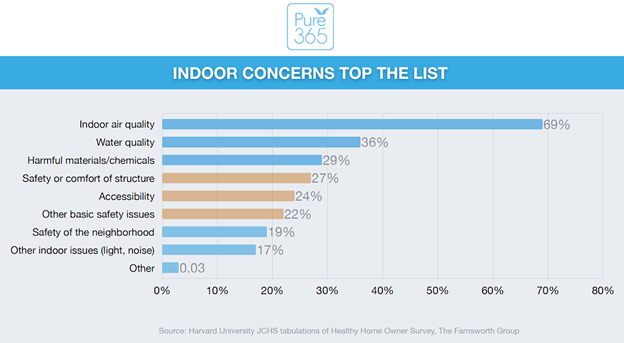 Even newer green homes are not immune to poor indoor quality. Even newer green homes are not immune to poor indoor quality. “Homes today are being built tighter than ever for energy efficiency, but what’s happening is that many homes do not have sufficient ventilation and this results in pollutants being trapped inside, producing what’s known as ‘sick building syndrome,’ ” says Michael Don Ham, President of Pure 365.
Even newer green homes are not immune to poor indoor quality. Even newer green homes are not immune to poor indoor quality. “Homes today are being built tighter than ever for energy efficiency, but what’s happening is that many homes do not have sufficient ventilation and this results in pollutants being trapped inside, producing what’s known as ‘sick building syndrome,’ ” says Michael Don Ham, President of Pure 365.
The same goes for water quality. Drinking water is one of the most common routes of exposure to PFAS (toxic chemicals). PFAS have polluted the tap water of at least 16 million people in 33 states and Puerto Rico, as well as groundwater in at least 38 states. Today nearly all Americans, including newborn babies, have PFAS in their blood, and up to 110 million people may be drinking PFAS-tainted water according to the EWG. Even those who drink bottled water are not immune to toxicity: 93% of samples taken from 259 bottled waters were found to contain micro-plastic synthetic polymer particles, according to Frontiers in Chemistry.
Indoor Air Quality - Top of Mind for Homeowners
But how can we measure what we cannot see? In a word: monitoring. Pure 365'se mission is to put an end to those unknowns by delivering home wellness systems that monitor, control, and purify your home’s air and water. The company offers home wellness solutions based on integrated hardware, software, product and services that allow homeowners to better manage their environment for their ultimate health.
“We created Pure365 to make homes healthy for families,” says Ham. “We named our company Pure365 because we want people to have access to clean air and pure water every day. It’s not an event, but an entire ecosystem. While some might think of these types of systems as a luxury, they should instead be thought of as essential as electricity or AC. Out of sight may mean out of mind, but it doesn’t mean out of body. Harmful effects add up over time…and these toxic loads are what causes premature disease, which we all want to avoid.”
Delos is another wellness company that focuses on indoor air quality (IAQ), water quality, and more, helping homeowners understand the quality of the air inside your home with air-quality sensors (shown in the image above to the right of the touchscreen), monitored in real time. When the air quality goes beyond a threshold that Delos has defined based on research, the sensors trigger the Delos air filtration to remediate the contaminants and particulates that have been detected.
Humidity Control is also crucial to IAQ.“If you’re living in a damp and moldy home your chance of asthma increases by 40% due to mold spores in the air—and you can’t see mold spores. You could have mold behind your walls and not even know it. With our solutions, there is never going to be a time when the environmental conditions are conducive for mold to grow. The system is automated to keep your air at a constant and optimal humidity level (40-50% RH) every day,” says Ham.
Home Wellness: Drink It In

“Even if it is great at the source, water still has to run through miles of infrastructure. By the time it gets to your tap, it can have harmful contaminants and particulates,” says Anthony Antolino, Chief Commercial Officer & Chief Marketing Officer at Delos. Delos’ water-filtration solution takes into account your specific geographic area. Ten years of historic data specific to your location help assess the problems with water locally and remedy them at your tap. “The water in Arizona is different from the water in New York, so ours is not a one-size-fits-all approach…”
Pure 365 has standalone and whole-house water purification systems that offer ‘better than bottled’ water, giving you real-time info on the quality of water, filter notifications, and leak detection all via the Pure 365 app. “We are currently working on the integration architecture for our wellness ecosystem to work seamlessly with other major home automation platforms and expect to have integration with Crestron and Control4 this year,” says Ham. This type of integration will allow smart homes to have creative features like blinking the lights red if the CO2 levels in the home reach a certain level or shutting off the water main if the system detects a leak.
The cost of systems like Pure 365 and Delos varies depending on the systems and level of integration desired. Contact your local HTA integrator to learn more about water and air quality.
See the Light: Lighting Helps the Body’s Natural Rhythms
There are some aspects of the smart home that we can see that relate directly to wellness, such as lighting. Indeed, there are few aspects of daily living more ubiquitous than light, and none more central to human behavior—from work and leisure activities throughout the day to evening relaxation and sleep cycle. Circadian rhythm—the natural cycle of physical, mental, and behavior changes that the body goes through in a 24-hour cycle—is vital to a healthy way of life.
Savant’s Daylight Mode, which recently won a CE Pro BEST Award for Wellness Products, improves quality of life for homeowners by aligning lighting schemes with the natural circadian progression based on time of day. A light that is turned on at noon will automatically illuminate at a cool color temperature and high intensity, while the same light activated at 9 PM will illuminate at a much warmer temperature and lower intensity level. The Savant App adjusts for related factors such as geography, time zone, and season.

Your HTA Certified integrator can also create scenes—customized presets designed to make smart home functionality very easy to use. Any scene can include lighting mode settings, providing homeowners with access to their preferred settings but with automatic lighting changes as the day progresses. As an example, a kitchen scene at 10 AM could activate cool, bright lighting throughout the dining and prep space, while the same scene activated at 8 PM will activate warm, dim lighting settings that are in accordance with the evening hours, maintaining circadian rhythm and a healthier cycle.
There are many other players in the wellness lighting scene, including Delos Darwin, which creates lighting that mimics the sun and naturally helps your body produce the right hormone levels for sleep. Darwin also produces brighter blue light in the morning, and in the evening begins to strip out the blue light so our bodies can produce melatonin and prepare for sleep.
“It’s no secret that sleep is at the root of our ability to be refreshed, feel good, recharge, rejuvenate, and fight off disease,” says Antolino. “Helping our bodies align to that natural clock is important, especially in these days when we are bombarded by screens that affect our ability to sleep.”
Likewise, Colorbeam offers tunable lighting ranging from 1700K to 6500K. With one touch, circadian and human centric lighting can become part of the homeowners’ new healthy home lifestyle.
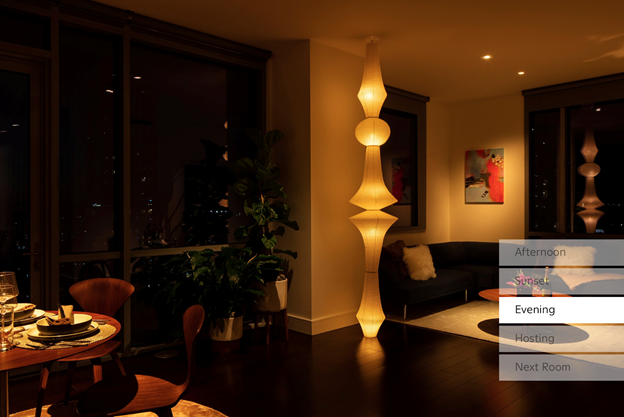 Lutron Ketra emulates daylight in interior spaces. Ketra’s selection of light sources creates high-quality white, pastels, and saturated colors, which enhance the look of the space and allow you to precisely tailor the light to meet your needs.
Lutron Ketra emulates daylight in interior spaces. Ketra’s selection of light sources creates high-quality white, pastels, and saturated colors, which enhance the look of the space and allow you to precisely tailor the light to meet your needs.
Even shades come into the wellness picture. For example, Lutron makes channeling natural light simple and more decadent with window coverings. Automated shades offer refined daylight control: Let the sun in to energize your mornings and illuminate your daily routine; block midday glare while preserving your view; and let you enjoy the sky’s soothing palette at the end of the day. You can also have your HTA Certified partner integrate shades with lighting control and add them to your favorite scenes.
Music Makes It Home
One thing has become abundantly clear during the pandemic era, and that’s that entertainment and connection breeds a healthy lifestyle. Talk to anyone who used to go to live concerts, and they’ll tell you seeing a show is the first thing they are going to do when the world returns to normal. Home entertainment allows us to connect with the music and media content we love, gather around the TV for family time, and is the seasoning to any good party. That’s why Sonos is making it part of its mission to explore the connection between music and health at home. To learn more about the effects of music on home wellness, check out the article where we interview Sonos to determine why "Music Makes It Home."
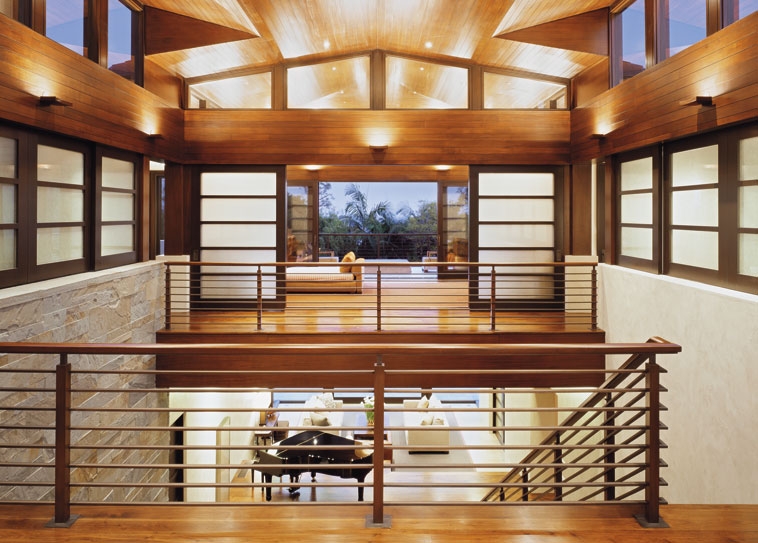 Acoustic Wellness Eliminates Low-Level Stress
Acoustic Wellness Eliminates Low-Level Stress
Naturally, the conversation about music engenders a conversation about acoustics, which is about way more than just a great-sounding home theater. Whole-home acoustics should be more of a conversation than ever before as we work and learn from home. According to the World Health Organization, excessive noise “seriously harms human health” and interferes with people’s daily activities at school, at work, at home, and during leisure time. It can disturb sleep, cause cardiovascular and psychophysiological effects, affect hearing, reduce performance, and provoke annoyance responses and changes in social behavior.
“A noisy environment can come from a variety of factors in the home, such as the HVAC operating or humming from a light dimmer,” says Steve Haas of SH Acoustics. “But you also have other noises like dogs barking and kids yelling, and all have an effect on your daily stress levels.” To learn more about the effects of noise at home on wellness and working with a professional acoustical consultant like Haas, click here.
“Wellness tech solutions are not as much an expense as they are an investment,” says Ham. “The science on health impacts stemming from poor air and water quality is irrefutable. We all have a choice to either invest in our long-term health now in an effort to ward off preventable disease or to face the risk of paying for medical expenses and treatment let alone experience all the suffering and heartache that comes from being sick later on.”
As consumers become increasingly health conscious, it is clear that home wellness is a beneficial trend that is not going away, and technology is the key to bringing it all home. Engineering it, installing it, automating it, and updating it is made simple with an HTA Certified integrator. Find one here and get started feeling—and living—better.










